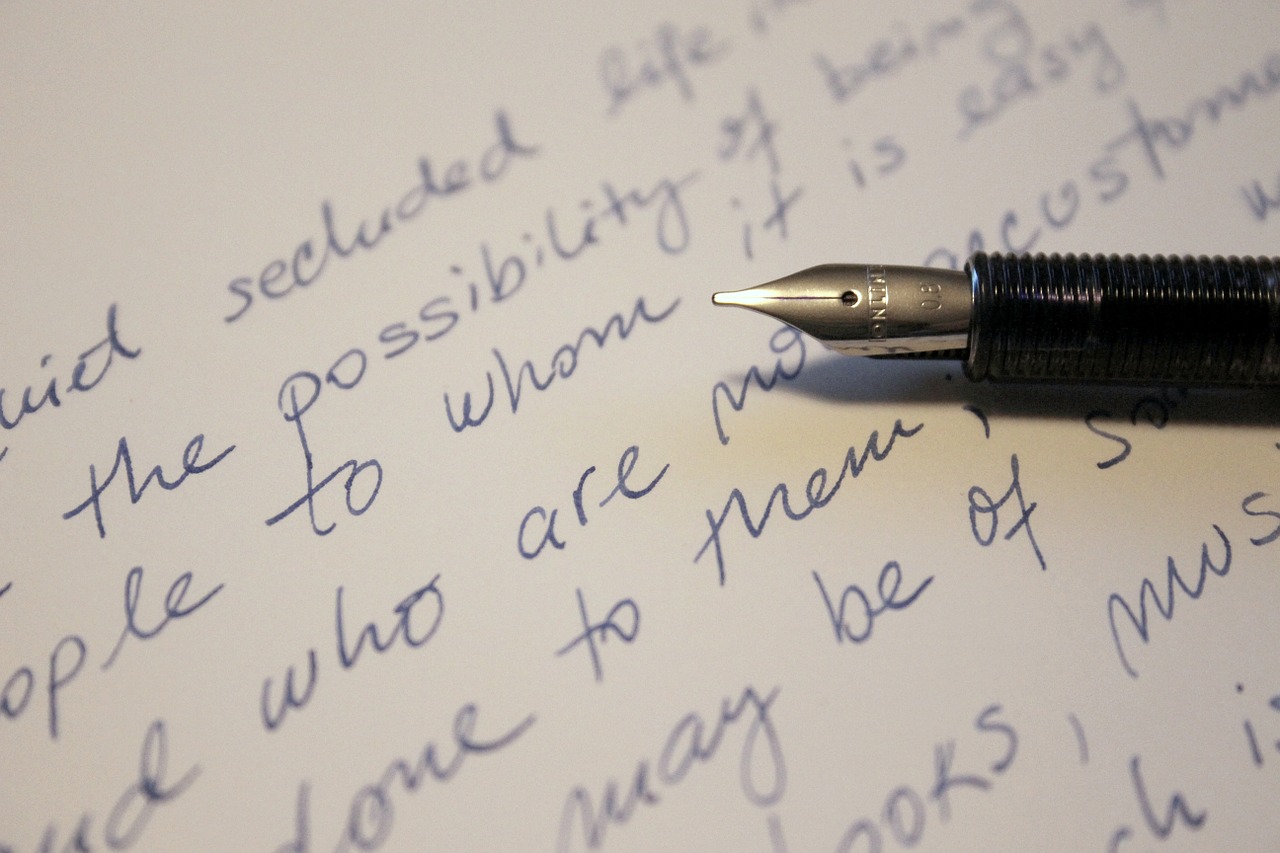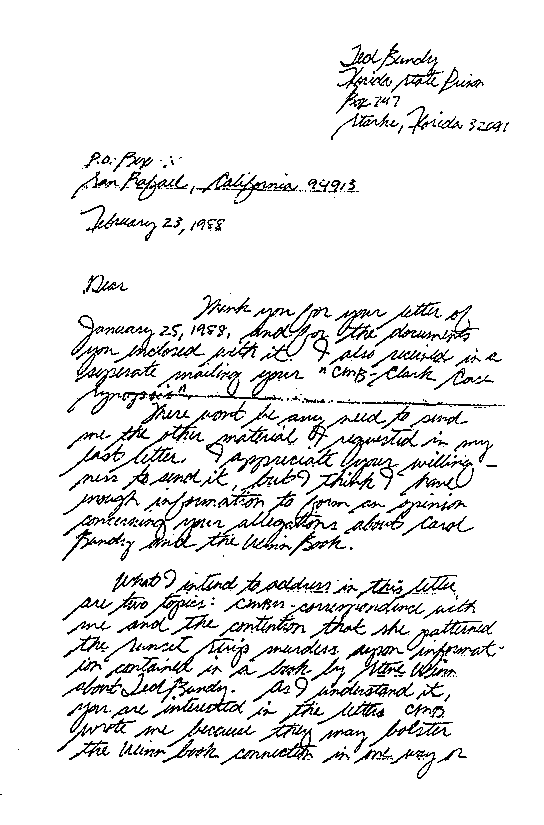Now Reading: Role of Graphology in Forensic Investigation
-
01
Role of Graphology in Forensic Investigation

Role of Graphology in Forensic Investigation
ABSTRACT
People develop handwriting on their own. Everyone has a uniquely personal and individual handwriting. Even if a person is taught how to write, he/she will not follow that same handwriting pattern throughout the life. Our handwriting reflects a lot about us. Graphology is the study of handwriting to know a person on the basis of handwriting traits. Physiological state of a person can be known by the graphological examination of handwriting. It gives an idea about the nature, positive and negative traits of an individual. A forensic graphologist analyzes all the physical characteristics of the handwriting and frames an opinion to facilitate criminal justice in the court of law. This article enlightens the importance of graphology and its role in forensic investigation.
Keywords: Graphology, Investigation, Handwriting analysis, Personality traits, Handwriting features, Forensic profiling.
INTRODUCTION
Graphology is four hundred years old science. Graphology or handwriting analysis is been carried out for decades to centuries but it became more effective after the 19th century when it came into practice with psychology to study behaviour and personality traits of an individual.
Two categories fall under the study of graphology, Integrative graphology deals with the formation of strokes and its relation to the personality of an individual while, Holistic graphology focuses on the movements during writing, forms and usage of space. It is applied in the case of ransom notes, signatures, letters and other common scenarios.
ROOTS OF GRAPHOLOGY
Handwriting science has its roots in Eastern India. It was first founded by Rishi Parashar, a researcher of the Sanskrit language. He wrote a book and named it “Greepha” which is the 1st book on handwriting science. The book consists of all Sanskrit alphabets and handwriting features such as slants, size, and strokes.
French priest Father Miko was the first person who gave a scientific value to this science. He performed research on handwriting and conclude that in whatever situation of humans, the specific letter formation occurs due to emotion flow in the human brain at the time, and hence handwriting is brain writing. He said that “Handwriting is unique. It cannot be copied because emotions vary from person to person.”
Graphology was uplifted in 1622 when Dr. Camillo Baldi, an Italian medical doctor reintroduced the science of handwriting. He is entitled as ‘Father of Graphology.’ His book named ‘Treated how, by a letter missive, one recognizes the writer´s nature and qualities’, and it is considered to be the first known graphological essay.
In 1870, the term “Graphology” was coined by Jean Michon, a French man. In 1930, Dr Ludwig Klages establishes the relation between handwriting and character. He is widely regarded as the father of modern graphology.
METHODOLOGY
Forensic investigators use graphology to determine the personality traits of an individual. To do so, forensic experts have to study and analyse a large number of handwriting samples, control samples, unknown and suspected samples to frame an opinion. Handwriting reveals a person’s emotional status while writing. Graphologists use different tools such as magnifying lens to observe the handwriting and specific features. Manual/ Physical analysis involves the study of various handwriting features such a slant, margins, word spacing, connections, pen pressure, line spacing, movements, formations, ‘i’ dots, t bars etc. Each feature has a specific meaning and helps to identify personality traits. Accuracy of which depends on the skills of a forensic graphologist.
Apart from manual/ physical examination, there are many technological methods for behavioural analysis that can analyse personality traits through the help of the computer. Automated handwriting analysis overcomes the prone and errors of manual analysis and assists the graphologists. Computer-Aided Graphology (CAG) is one such method used by graphologist to predict personality traits. It’s an error-free and time saver method for graphologists. CAG scans the handwriting sample, processes the image, removes the extra pixels, converts it into Grayscale and hence a binary image is obtained. That image is segmented and each segment is processed to extract features. All the extracted features are then analysed through a context-free grammar implementation that assists graphological analysis. A context-free grammar is a list of commands of recursive rewriting used to create patterns. Thus, the result is obtained after the analysis. Software used nowadays for handwriting analysis is WANDA and CEDAR-FOX.
DUTIES OF A GRAPHOLOGIST
Graphologist is qualified specialists who analyse the handwriting traits to understand an individual personality. A graphologist collects all the respective samples and makes sure that the samples contain all the required information. Measures the size, height of the letters and slants using calibrated tools. A graphologist then observes the letter formation and strokes using a magnifying lens or microscopic techniques. He evaluates all the handwriting features from the sample, may use diagrams to plot the features individually. After analysing all the personal characteristics thoroughly, a graphologist frames an opinion about the personality and a person. A graphologist is called in the court of law to frame their opinion in handwriting cases when required. He must maintain a proper record of the analysis. It is a graphologist’s duty to identify complex problems and develop solutions. He must know laws and courtroom procedures.
GRAPHOLOGY IN FORENSIC INVESTIGATION
Graphology is the scientific method of arriving at an opinion based on common sense, universal concepts, mental interpretations and pragmatic research that can give insights of mood, intelligence, emotional state and integrity of a person. Knowing the mental state of a person while writing can be a piece of very useful information to assist the investigation for suicidal cases or any criminal case that involves handwriting. It’s a fact that handwriting is a neuromuscular activity which is itself a shred of reliable evidence for investigating the cases in forensic aspects where profiling of criminal mind and Modus Operandi plays an important role.
Graphology is an emerging field for personality recognition of an individual. It covers over 300 different handwriting features including margins, slants, strokes, size, pressure etc and each of the feature is unique and indicates about different parts of the personality of an individual.
Study of margins conveys the nature of a person. The narrow right margin shows impatience and eagerness. The wide right margin shows fear. While slants reflect the emotions of a person. If the slant is upright, the person is independent and can hold emotions. Right slant suggests balanced emotions and left slant indicates suppressed or more intensive emotions.
The large size of handwriting suggests that the person is extrovert. A smaller size indicates that the person is logical and academic. Large word spacing indicates freedom and possessive of personal space. Closely spaced words show that the person is intrusive. A lot of dots while writing shows a lack of self-confidence.
Some people consist of only one handwriting style, while many people may have a mixture of two or more styles. This again provides useful information. Study of connections shows if a person is stubborn or secretive, practical, lack of patience, also maturity and skills. All this information is very useful for forensic investigation to narrow down the search of a criminal mind or to judge a suspect. It is impossible to determine the age and sex from the handwriting of a person, but a clue of masculinity or feminine can be known.
Graphological enlightens a psychiatric point of view in the cases of schizophrenics, paranoiacs, alcoholics, extreme cases of hysteria and very rarely neurotics or obsessive-compulsives. From a graphologist’s point of view, the writing of a psychopath can typically be comparatively conformist, rather banal, with very little rhythm, stiff, monotonous and galore in abnormalities.
CASE STUDY: HANDWRITING ANALYSIS OF A SERIAL KILLER
The psychopath Theodore Robert ‘Ted Bundy’ born Theodore Robert Cowell was serial killer, rapist, kidnaper and necrophiliac. He was convicted for 30 homicides identified between 1974 and 1978 but is thought to have actually committed far more such atrocious deeds.
Ted Bundy was suspected to be raised by his own violent, abusive grandparents, brought up in a violent environment and being put through the traumatic experience of seeing his grandmother periodically undergoing electroconvulsive therapy for depression. His separation from his university girlfriend is considered to be the triggering event in his criminal development.
Ted Bundy’s handwriting is much structured and paragraphed. The right margin is snaky and the left one is linear. The writing is slanted to the right, is narrow and tall. The middle zone is dominant, the upper zone is low, while the lower zone appears to be developed with circular loops. The lines are horizontal, the distances between letters vary between words and are little between lines, creating entanglements. He uses arcades type of connections. The speed is good and the pressure is even. Ted Bundy presents himself as an elegant, creative and a magnetic person. He is educated, smart, capable, thorough, logical and determined. However, the writing also displays his vanity, stinginess, and sense of self-importance.
(Source: The Write Event – https://graciousliving.typepad.com/the_write_event/2004/01/ted_bundyhandwr.html)
CONCLUSION
The idea behind graphology is that people can develop their behaviour or character by studding or modifying their handwriting. Graphology is progressively used for many purposes like self-reformation, personality development, child growth, counselling, team building and combined with psychology, it is a great therapy tool.
Handwriting analysis has both believes and scepticism. Although graphology is an applied science but not yet considered to be accurate effective as it can only suggest a part of an individual personality, not the in-depth picture of a person’s abilities or personality. Research in the field of graphology continues to prove the value of this practice before such blind faiths. The only fact that doesn’t help is the reason behind the existence of graphology and why can it be used to interpret the personality traits of an individual.
REFERENCES
- Blog on Handwriting Science by Nirav Hiingu.
- Dang, Sandeep and Mahesh Kumar: “Handwriting Analysis of Human Behaviour Based on Neutral Network.” International Journal of Advance Research, 2014.
- Dazzi, Carla and Luigi: “Graphology and Personality: An Empirical Study on Validity of Handwriting Analysis.” Psychological Reporters, 2009.
- Deshpande and Seemant: “Graphology: A Review.” Proceedings of 54th IRF International Conference, 2016.
- Gluhchev and Georgie: “Handwriting in Forensic Investigations.” International Journal “Information Theories and Applications” 2007.
- Kanchana, Bhavya Ottappurakal, Silpa Suresh and Sajini RS “Personality Identification Based on Handwriting.” International Journal of Emerging Technologies in Computational and Applied Sciences, 2015.
- Fisher J, Maredia A, Nixon A: Identifying Personality Traits, and Especially Traits Resulting in Violent Behaviour through Automatic Handwriting Analysis. Proceedings of Student-Faculty Research Day, CSIS, Pace University, USA, 2012.
- Molly C. “Handwriting Analysis and the Secrets of Graphology”, 2014.
- Huber RA, Headrick AM. Handwriting Identification: Facts and Fundamentals, 1999.
- Fogarolo L. Handwriting Analysis and Personality Traits. 2016.
- Ravi M. “Handwriting slant reveals why some people show no emotion.” 2011.
- Kocsis R.N., “Criminal Profiling: Principles and practice”, Ed. Humana Press Inc, New Jersey, 2006.
- Holmes R. and Holmes S., “Profiling Violent Crimes: An Investigative Tool”, Ed. Sage, 2008.
- Turvey E.B., “Criminal profiling: an introduction to behavioural evidence analysis”, Ed. Elsevier Publishing House, Academic Press, 2008.
- ‘The Writing of Criminal Minds Criminology and Handwriting Analysis.’ International Journal of Criminal Investigation, Volume 1, Issue 4.
- Ruth Gardner, “Instant Hand Writing Analysis: A Key to Personal Success” 1989
AUTHOR
AAYUSHI SHUKLA
STUDENT
NATIONAL FORENSIC SCIENCES UNIVERSITY










